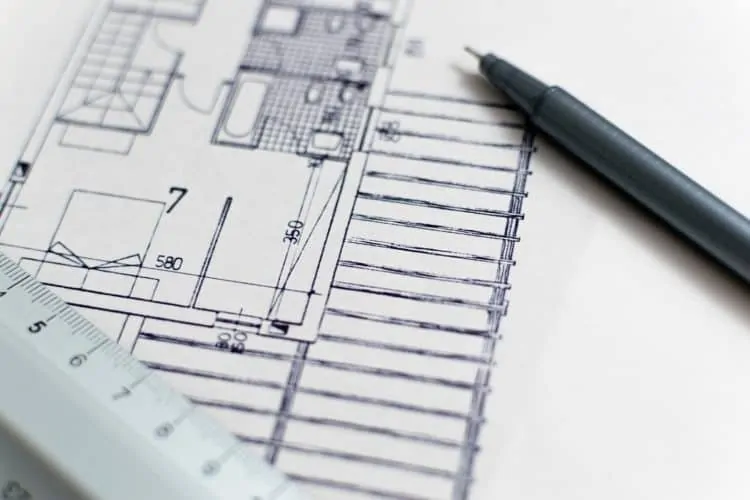
What is the Best Layout for a Guest House?
At first thought, the guest house serves one purpose; to comfortably and efficiently house any guests visiting the property. Often adjacent to the main property, the guest house is a structure built specifically to feel just-isolated-enough that the guest(s) is part of the home but disconnected in a way that they’ll experience ample privacy. Typically, a guest house will have, if not most, all the functionality of an actual home; running water, electricity, bathroom, living room, bedroom, and a kitchen. An accessory could be a washer and dryer machine, although many guest houses include these as well.
Yet, beyond being a structure designed for visitors, guest houses or granny flats are the perfect home improvements that add major value. For one, if designed correctly (we’ll go into this), a guest house can add value to your home. It should be commonsensical that the same sized home with a guest house would be more valuable than one without. Still, homeowners don’t tend to regard guest houses in this light, as it can be hard to view them as an investment on the property in its entirety.
Further, a guest house can optimize the aesthetic of a property by filling space otherwise empty, complimenting the original architecture, and creating more room for the everyday needs of the homeowner. If you’re currently on this page because you’re considering building a guest house, then rest assured that you are in good hands. As with any home design, building a guest house takes careful consideration, a thorough understanding of the proper guest house layout design, and patience.
Simplicity & Minimalism
Before we continue, it is paramount that we speak on simplicity and minimalism. When it comes to guest house plan designs, the rule of thumb is that—despite the bells and whistles or scope of the design—it is best to keep the layout simple and minimal. This is a structure that will serve as a temporary home, like a hotel, for your guests.
The space should be open, full of light, and unspecific. You want the house to have just enough style where a guest would be comfortable hosting their own visitors but not so much that they feel out of place. Every room should be easily accessible, with the least amount of clutter possible (you want your guests to envision themselves in the space rather than staying in someone else’s). The kitchen should be open and functional, the bathroom separate enough from the rooms, and the front door positioned to retain privacy but allot accessibility.
We’re not trying to go into specifics just yet but remember, as you begin to think through your guest house building plans, simplicity should be at the heart of every decision made.
Things to Consider
Before deciding on a guest house layout, it’s important to answer a host of questions that could dictate the way in which you decide to construct the property. These questions will help shape your idea of the home both creatively and functionally.
Location
First and foremost, you’re going to want to place your guest house somewhere that offers privacy without sacrificing accessibility. This may take hiring a surveyor or seeking professional advice from a home designer. The point here is to position the property in a way that it still feels ‘part’ of the main house, yet secluded enough that a guest can comfortably live in their own world.
Dependent on the most optimal location on your property, this can dramatically affect the layout of your guest house. Say, for instance, the most optimal location happens to be the area with the least space, then that one story guest house layout may just add a second tier.
How Can it Help the Property?
A common mistake with guest houses is building it specifically for visitors. Sure, the guest house—by its very name—is a part of the property meant for your guests. As we stated before, however, it can become an incredibly valuable asset to your original property, further increasing the value. More livable space is important. It’s also coveted.
Furthermore, how can this structure assist your needs as a homeowner during downtime? We mean to say, when there’s no one staying in it, what’s it doing for you? Plenty of homeowners will decide to add storage space to their guest house, space not meant for the visitors themselves, and they’ll utilize the new addition by filling it with stuff that clutters their own home.
They can also be a fantastic tool for renovation. What happens when a house is renovated? The tenants or homeowners must leave the property and stay elsewhere. With a guest house, say goodbye to squatting at the parent’s or paying for a hotel, as the home can be used a temporary stay while the main house is renovated.
These are only a couple facets of a guest house’s attributes (additional rental income, anyone?) but are worth considering before tackling design. The best guest house will complement both the homeowner and the visitor.
The Guest House needs to be Autonomous
The place in which you’ve chosen to build your guest house, has there been anything built there previously? Is there piping (both gas and water)? How hard will it be to run electricity to the property? Depending on the budget you have for your guest house, choosing the most optimal area to build the property atop is also advised.
Given it is not in a location that renders the functionality and accessibility of the property inefficient, then why build over a piece of land where conduits will need to be dug, landscaping will eat through your wallet, and all new piping will have to be run? This, of course, is dependent on the budget you have set for your guest house but thinking through options that will dramatically cut costs can greatly affect the layout of your new tiny house.
Floor Plan for a Guest House
When it comes to addressing the ‘best’ floor plan for a guest house, we won’t be able to advise you accurately. This, of course, is due to the nature of home design and how it’s always specific to the homeowner and property. A two-story guest house may be perfect for a certain property but not for another. It also may fit well within one budget while destroying another.
Thus, the best floor plan for a guest house is entirely dependent on your overall objective, the size of your space, and the amount of money you have to put towards the casita addition. With that being said, there are generalities when it comes to floor plans that can be addressed and they’ll help shape your perspective and possibly inspire your own ideas!
The Generic Guest House
The generic guest house is best thought of as a one bedroom apartment. Typically, the square footage will range anywhere from 450-1000 sqft. The front door will connect directly to the living room, which will then open up to allow access to two other rooms; the bathroom and bedroom. Typically, kitchens are attached to the living room itself or tucked away in a corner, sometimes even having their own room.
Thus you have three rooms in total:
- Living room
- Bedroom
- Kitchen
This guest house functions exactly like a ‘mini’ property or tiny house, providing perfectly livable conditions in a consolidated space. For inspiration, one must simply research single bedroom apartments or homes to identify a given layout they desire. This leads us to our next guest house design.
The Single Bedroom Loft
When building small homes, the priority is always to utilize the limited space available. A home designer or architect will ask: how can I make this feel open, utilizing every square foot possible? A fantastic way to open space for the interior amenities is to build a loft. This will isolate the bedroom to an upstairs location, providing more room for the floor below.
This is also a great option if the space you’ve chosen does not have the room to include everything you want in only one story. By building vertically—with the decision to do so made before the structure is built—you can vastly change the amount of livable space there is in your small house.
Again, simplicity is key here. The loft need be nothing scant more than a place to sleep, or it can be fleshed out like an actual bedroom. The choice is yours dependent on your specific situation, but by all accounts, a loft (or simply adding a second story) can greatly optimize the design of a guest house. Sometimes, it is the only option that will fulfill a homeowner’s given needs.
Note:
An important note when it comes to the loft or second story is that, if the people visiting are elderly, it may be difficult for them to use the space. Being that these structures are usually smaller, a spiral staircase (or a ladder—even though these are the least stable) are most often chosen to bridge the gap between levels. Adding an actual staircase in a one bedroom eats up a significant amount of space and isn’t always preferred. By cutting this corner you could limit the type of person that’s going to be able to enjoy the home, or part of your renter’s demographic.
Renting Out Your Guest House
The guest house we’re detailing above is the full package. It’s built so that any of your visitors can experience a livable property with all the amenities offered by the main house (just in a consolidated manner). This means that, if you were to choose to rent out your guest house, which is a decision that could prove to be quite lucrative, then you’ve built a property which supports that pursuit.
However, by no means does a guest house have to include the every facet of the ‘full’ design. A guest house can complement your original property and provide the ideal sleeping situation for your visitors, but require them to use the main property for anything additional.
This could take the form of a one bedroom with no kitchen. Or a one bedroom with no washer and dryer. Even a one bedroom with no bathroom, although this is rarer. Our point here is that the guest house does not need to have the full range of amenities and can be nothing more than comfortable living quarters—like a basic hotel room—for anyone that visits the property.
The Micro Guest House
A new trend, one both innovative and DIY-focused, is the addition of a micro guest house. By the name you could guess that this type of structure is smaller than even your ‘generic’ guest house. These properties usually range from 80-400 sqft and are often products of a homeowner’s innovation. From building a small cottage, renovating a little trailer, insulating a shed, to just about any structure that could be lived-in, the micro guest house says: we’ll give you a place to sleep that feels private and disconnected from the property.
Rarely does a micro guest house provide more than a bedroom and electricity. Still, they’re a creative and fun (often DIY) way of providing a bit of privacy for your guests without having to actually erect an entirely separate home. If you’ve been thinking of making a conversion, know that you’re not alone, and a bit of research will shine a light on all the innovation being executed in the micro guest house space!
Conclusion
Guest houses are an accessory to a property that could be deemed a necessity. From providing a quiet and personal space for guests, opening up livable room for the property as a whole, increasing property value, and allotting a space disconnected from the house that can be rented, they’re by and large a fantastic addition to any home.
Choosing the best layout for a guest house is a decision that will be specific to your wants, needs, space, and budget. However, in this guide we hope to have pointed you in the right direction or at least sparked some ideas. As with most home design, the do-it-yourself model can be viable, but if you’re not a professional it’s best to consult one for their opinion and expertise. At the end of the day, you want to choose the best layout that complements both you and your guests!











